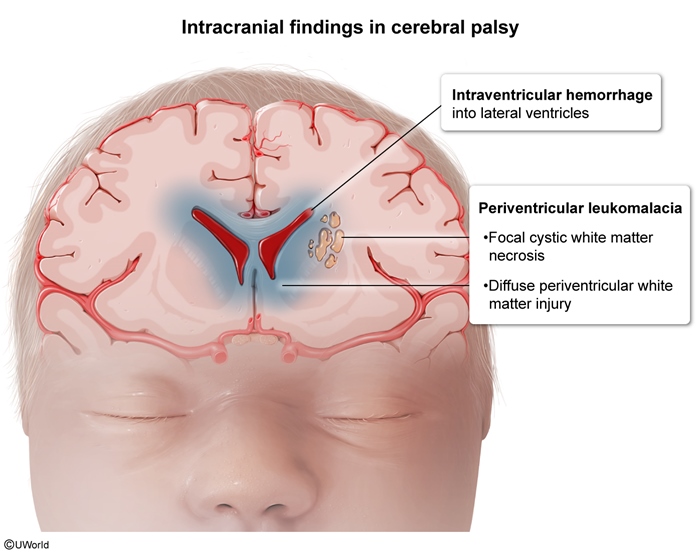Cerebral Palsy
Article Sections
Introduction
Cerebral palsy (CP) is a heterogeneous condition characterized by permanent, nonprogressive motor dysfunction caused by damage to the developing brain. CP can be caused by a variety of conditions with a wide spectrum of severity, ranging from mild motor impairments to severe disabilities.
Pathophysiology and risk factors
CP typically occurs due to perinatal insult to the brain, which damages gray matter (eg, cerebral cortex, basal ganglia, thalamus) and/or white matter involved in regulation of motor control. Because upper motor neurons in the CNS are damaged, loss of descending inhibitory control of muscles occurs and patients often have upper motor neuron dysfunction (eg, increased muscle tone, spasticity, and hyperreflexia).
The mechanisms of cerebral palsy vary but can include:
- Periventricular leukomalacia
- Intraventricular hemorrhage
- Hypoxic-ischemic encephalopathy
Continue Learning with UWorld
Get the full Cerebral Palsy article plus rich visuals, real-world cases, and in-depth insights from medical experts, all available through the UWorld Medical Library.
Figures
